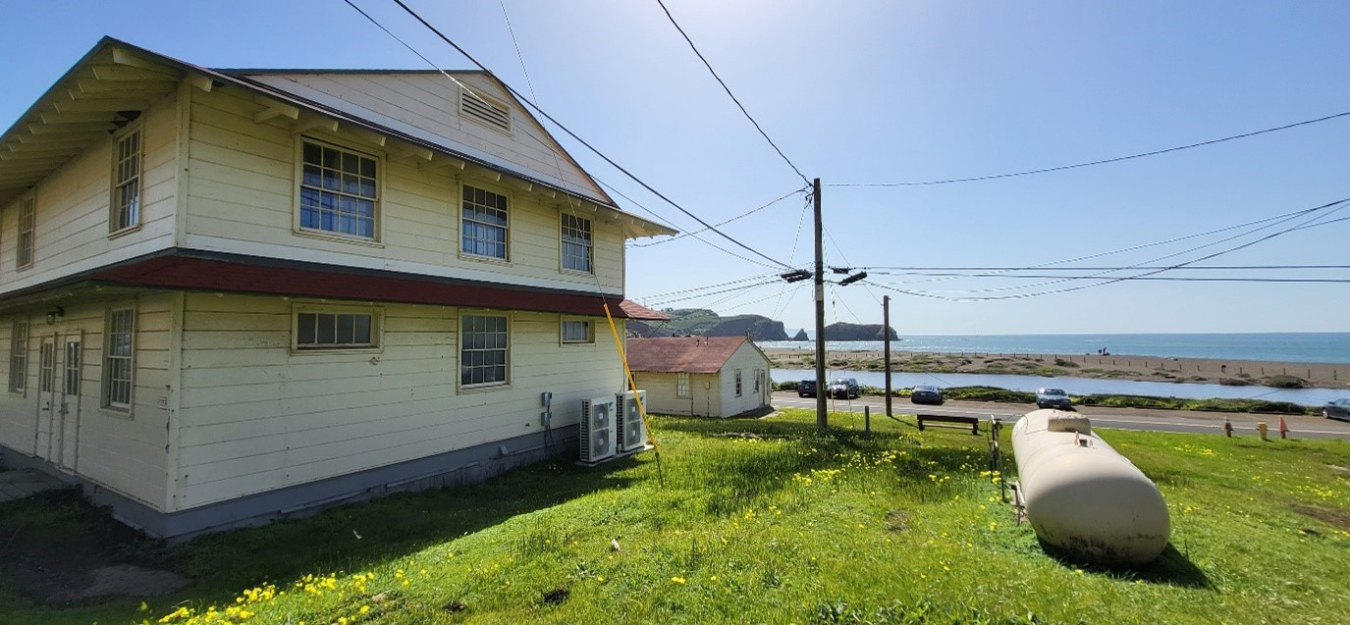Fort Cronkhite, a former World War II military post nestled along the Pacific Ocean within the Golden Gate National Recreation Area (GOGA), embarked on a comprehensive initiative to modernize its infrastructure focusing on sustainability and environmental stewardship.

Fort Cronkhite converted its World War II era barracks to all-electric, carbon-neutral dorms for National Park Service interns by transitioning from propane furnaces to electric heat pumps and water heaters.
Project Details
The retrofit project primarily targeted energy efficiency enhancements and carbon emission reductions across Fort Cronkhite's buildings. Notably, a World War II-era barracks, repurposed today as offices and housing for the National Park Service, was renovated into an all-electric, energy-efficient dormitory. With 18 interns now occupying the space, this building marks the first of many planned conversions to all-electric buildings powered by clean, renewable electricity within the GOGA.
GOGA already purchases 100% renewable electricity for park buildings through local Community Choice Energy programs. Installing electric heating and appliances and removing the propane gas tanks used for heating eliminates the building's carbon footprint.
Key components of the project include building electrification and energy efficiency measures, electrical infrastructure upgrades, and electric vehicle (EV) charging.
Conversion to Electric Heating and Appliances
The transition from propane furnaces to electric heat pumps and water heaters eliminated fossil fuel consumption in the dormitory building. This shift aligned with GOGA's commitment to sourcing 100% renewable electricity for park buildings.

Two electric heat pumps replaced propane furnaces at the Fort Cronkhite barracks building.
Infrastructure Upgrades
To support the increased electrical load resulting from the transition to electric systems, extensive infrastructure upgrades were undertaken. This included electrical panel upgrades, meter expansions, and other enhancements to ensure optimal performance and reliability.
Energy Efficiency Measures
The project incorporated various energy efficiency measures such as insulation upgrades, LED lighting replacements, and the installation of ENERGY STAR® electric appliances. These measures collectively contributed to reducing energy consumption and operating costs.
EV Charging Infrastructure
In alignment with broader sustainability goals and site electrical system upgrades, EV chargers were installed on the Fort Cronkhite campus to help facilitate the transition to electric vehicles within the park fleet. This project supported efforts to reduce greenhouse gas emissions and promote sustainable transportation solutions. Previously, the U.S. Department of Energy's Federal Energy Management Program (FEMP) conducted an electric vehicle supply equipment (EVSE) Tiger Team site assessment in December 2021, laying the groundwork for this initiative.
Project Implementation
The project was successfully executed through collaborative efforts involving the National Park Service, local utilities, regulatory agencies, and the National Renewable Energy Laboratory, with funding provided by FEMP. Additionally, leveraging the Pacific Gas and Electric Company's Betterment program enhanced project efficiency and ensured compliance with utility standards.
Environmental Impact
The shift to all-electric, carbon-neutral systems resulted in a significant reduction in carbon emissions, contributing to environmental sustainability. By embracing renewable electricity, this renovated dorm has avoided over 30,000 pounds of CO2 emissions annually, compared to its twin dorm next door that still uses propane.
Conclusion
Fort Cronkhite's sustainable infrastructure modernization project exemplifies the feasibility and benefits of transitioning to cleaner energy sources within historic landmarks. Through collaborative partnerships, innovative technologies, and a commitment to environmental stewardship, Fort Cronkhite has not only modernized its infrastructure but also set a precedent for sustainable development within the federal government.
Learn more about Golden Gate National Recreation Area's sustainability initiatives and other projects aimed at enhancing environmental resilience.

